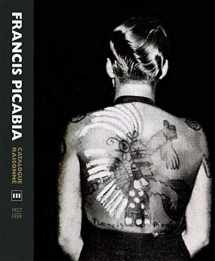
Francis Picabia Catalogue Raisonné: Volume Three: 1927–1939 (English and French Edition)
Book details
Summary
Description
This third volume in a planned four-volume catalogue raisonné of works by the French avant-garde artist Francis Picabia (1879–1953) includes paintings and selected drawings dating from mid-1927 through 1939. Innovative collage-paintings and flamboyant figural compositions known as “monsters” that dominated Picabia’s output in the mid-1920s gave way, during 1927, to new artistic directions. The most important of these was an exploration of the concept of transparency in many forms, first through the addition of new elements to his own pre-existing works, then through the tangled compositions he called “transparencies,” superimposing outlined figures, animals, plants, and other motifs. Picabia’s production during this period also encompassed imposing, representational compositions with firmly contoured and solidly colored forms, thickly painted topographical landscapes, curvilinear abstractions, and toward the end, photo-based figural paintings foreshadowing his notorious painted nudes of the early 1940s.


We would LOVE it if you could help us and other readers by reviewing the book
Book review





